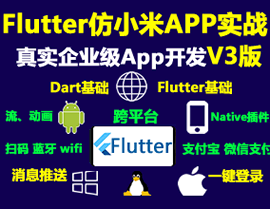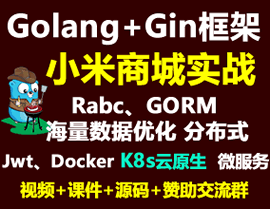Flutter自定义导航栏插件saluone_nav_bar的使用
Flutter自定义导航栏插件saluone_nav_bar的使用
开始使用
在你的项目 pubspec.yaml 文件中添加以下依赖:
dependencies:
saluone_nav_bar: ^0.0.1然后在你的 Dart 代码中引入该包:
import 'package:saluone_nav_bar/saluone_nav_bar.dart';使用方法
你可以通过 SNav 的属性来全局设置导航栏的样式。如果你希望单独设置每个标签页的样式,则可以使用 SButton 的属性。
下面是一个完整的示例代码:
import 'package:flutter/material.dart';
import 'package:saluone_nav_bar/saluone_nav_bar.dart';
void main() {
runApp(MyApp());
}
class MyApp extends StatelessWidget {
[@override](/user/override)
Widget build(BuildContext context) {
return MaterialApp(
home: MyHomePage(),
);
}
}
class MyHomePage extends StatefulWidget {
[@override](/user/override)
_MyHomePageState createState() => _MyHomePageState();
}
class _MyHomePageState extends State<MyHomePage> {
int _currentIndex = 0;
[@override](/user/override)
Widget build(BuildContext context) {
return Scaffold(
appBar: AppBar(
title: Text('自定义导航栏示例'),
),
body: Center(
child: Text('当前选中的页面是: ${_currentIndex == 0 ? "首页" : _currentIndex == 1 ? "喜欢" : _currentIndex == 2 ? "搜索" : "个人资料"}'),
),
bottomNavigationBar: SNav(
rippleColor: Colors.grey[800], // 选中时的波纹颜色
hoverColor: Colors.grey[700], // 鼠标悬停时的颜色
haptic: true, // 触觉反馈
tabBorderRadius: 15, // 标签按钮圆角半径
tabActiveBorder: Border.all(color: Colors.black, width: 1), // 选中状态的边框
tabBorder: Border.all(color: Colors.grey, width: 1), // 未选中状态的边框
tabShadow: [BoxShadow(color: Colors.grey.withOpacity(0.5), blurRadius: 8)], // 标签阴影
curve: Curves.easeOutExpo, // 动画曲线
duration: Duration(milliseconds: 900), // 动画持续时间
gap: 8, // 图标和文本之间的间距
color: Colors.grey[800], // 未选中图标颜色
activeColor: Colors.purple, // 选中图标和文本颜色
iconSize: 24, // 图标大小
tabBackgroundColor: Colors.purple.withOpacity(0.1), // 选中标签背景色
padding: EdgeInsets.symmetric(horizontal: 20, vertical: 5), // 导航栏内边距
tabs: [
SButton(
icon: Icons.home, // 使用Material Icons
text: '首页',
),
SButton(
icon: Icons.favorite_border, // 使用Material Icons
text: '喜欢',
),
SButton(
icon: Icons.search, // 使用Material Icons
text: '搜索',
),
SButton(
icon: Icons.person, // 使用Material Icons
text: '个人资料',
)
],
onTabChange: (index) {
setState(() {
_currentIndex = index;
});
},
),
);
}
}更多关于Flutter自定义导航栏插件saluone_nav_bar的使用的实战系列教程也可以访问 https://www.itying.com/category-92-b0.html
1 回复
更多关于Flutter自定义导航栏插件saluone_nav_bar的使用的实战系列教程也可以访问 https://www.itying.com/category-92-b0.html
saluone_nav_bar 是一个用于 Flutter 的自定义导航栏插件,它允许开发者创建灵活且可定制的底部导航栏。以下是如何使用 saluone_nav_bar 插件的基本步骤:
1. 添加依赖
首先,你需要在 pubspec.yaml 文件中添加 saluone_nav_bar 插件的依赖:
dependencies:
flutter:
sdk: flutter
saluone_nav_bar: ^1.0.0 # 请检查最新版本然后运行 flutter pub get 来获取依赖。
2. 导入包
在你的 Dart 文件中导入 saluone_nav_bar:
import 'package:saluone_nav_bar/saluone_nav_bar.dart';3. 创建导航栏
你可以使用 SaluoneNavBar 组件来创建自定义的底部导航栏。以下是一个简单的示例:
class MyHomePage extends StatefulWidget {
@override
_MyHomePageState createState() => _MyHomePageState();
}
class _MyHomePageState extends State<MyHomePage> {
int _currentIndex = 0;
final List<Widget> _pages = [
Center(child: Text('Home Page')),
Center(child: Text('Search Page')),
Center(child: Text('Profile Page')),
];
@override
Widget build(BuildContext context) {
return Scaffold(
body: _pages[_currentIndex],
bottomNavigationBar: SaluoneNavBar(
currentIndex: _currentIndex,
onTap: (index) {
setState(() {
_currentIndex = index;
});
},
items: [
SaluoneNavBarItem(
icon: Icon(Icons.home),
title: Text('Home'),
),
SaluoneNavBarItem(
icon: Icon(Icons.search),
title: Text('Search'),
),
SaluoneNavBarItem(
icon: Icon(Icons.person),
title: Text('Profile'),
),
],
),
);
}
}4. 自定义导航栏
saluone_nav_bar 提供了多种自定义选项,例如:
backgroundColor: 设置导航栏的背景颜色。selectedItemColor: 设置选中项的颜色。unselectedItemColor: 设置未选中项的颜色。iconSize: 设置图标的大小。elevation: 设置导航栏的阴影高度。
你可以根据需要自定义这些属性:
bottomNavigationBar: SaluoneNavBar(
backgroundColor: Colors.blue,
selectedItemColor: Colors.white,
unselectedItemColor: Colors.grey,
iconSize: 30.0,
elevation: 10.0,
currentIndex: _currentIndex,
onTap: (index) {
setState(() {
_currentIndex = index;
});
},
items: [
SaluoneNavBarItem(
icon: Icon(Icons.home),
title: Text('Home'),
),
SaluoneNavBarItem(
icon: Icon(Icons.search),
title: Text('Search'),
),
SaluoneNavBarItem(
icon: Icon(Icons.person),
title: Text('Profile'),
),
],
),







